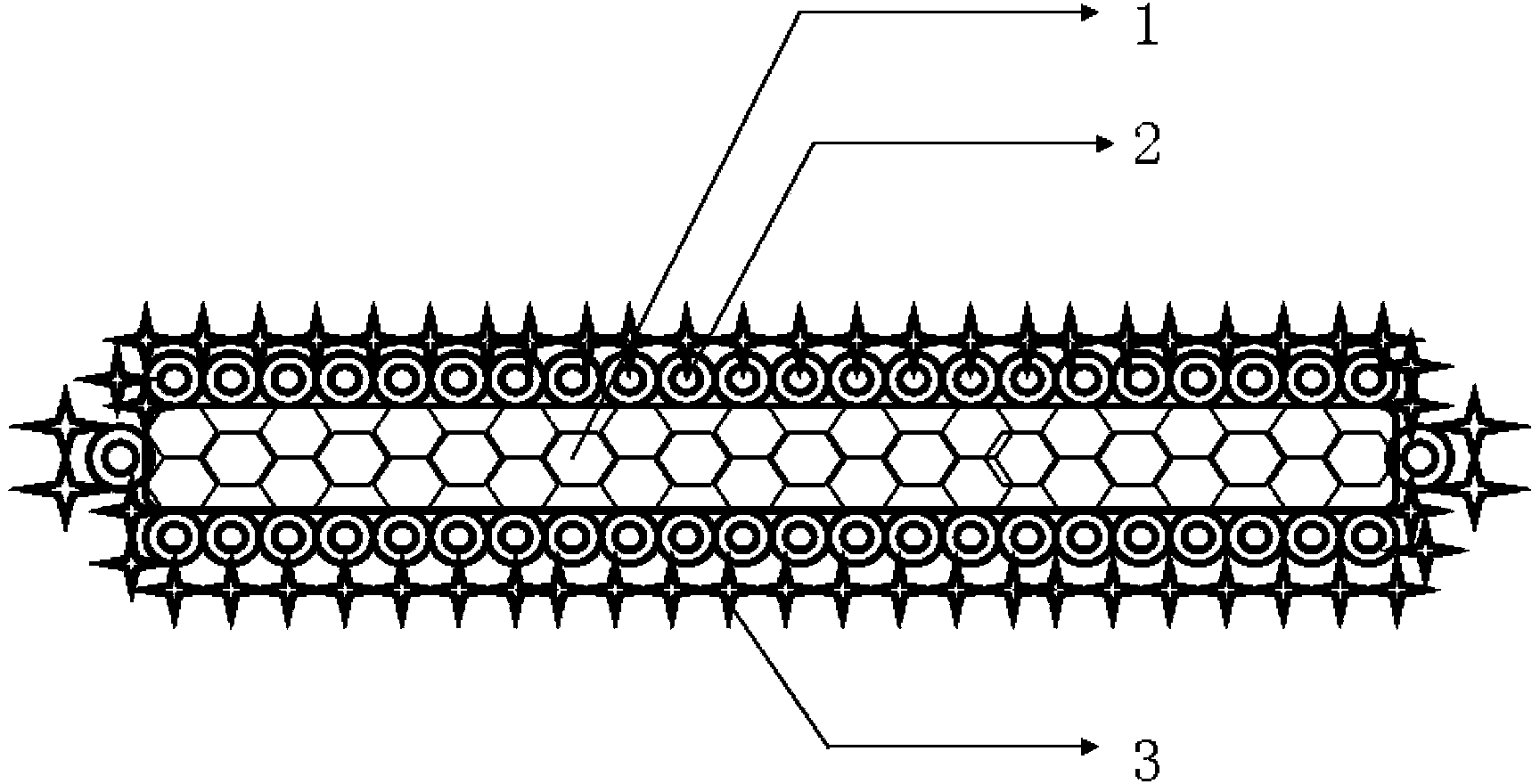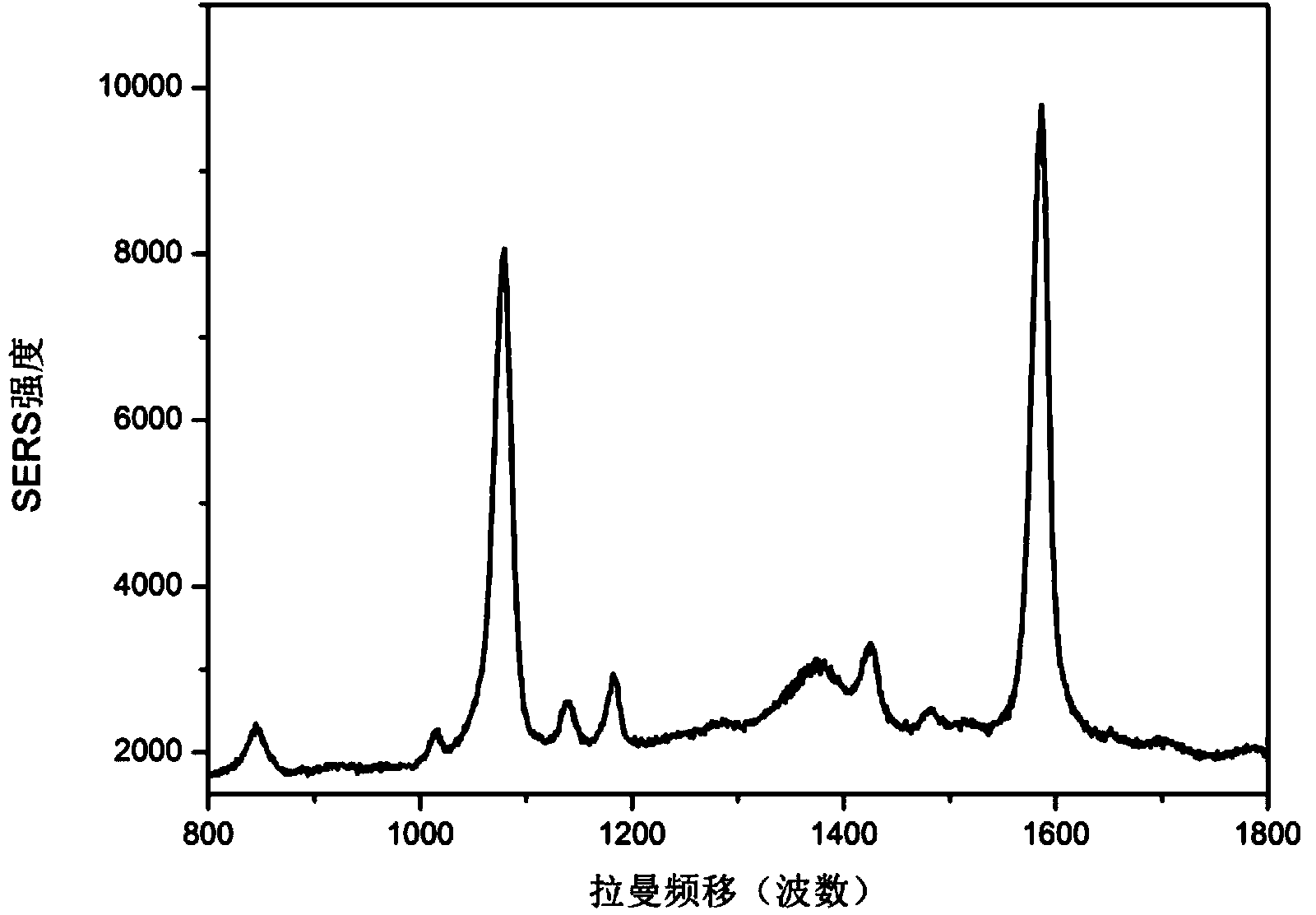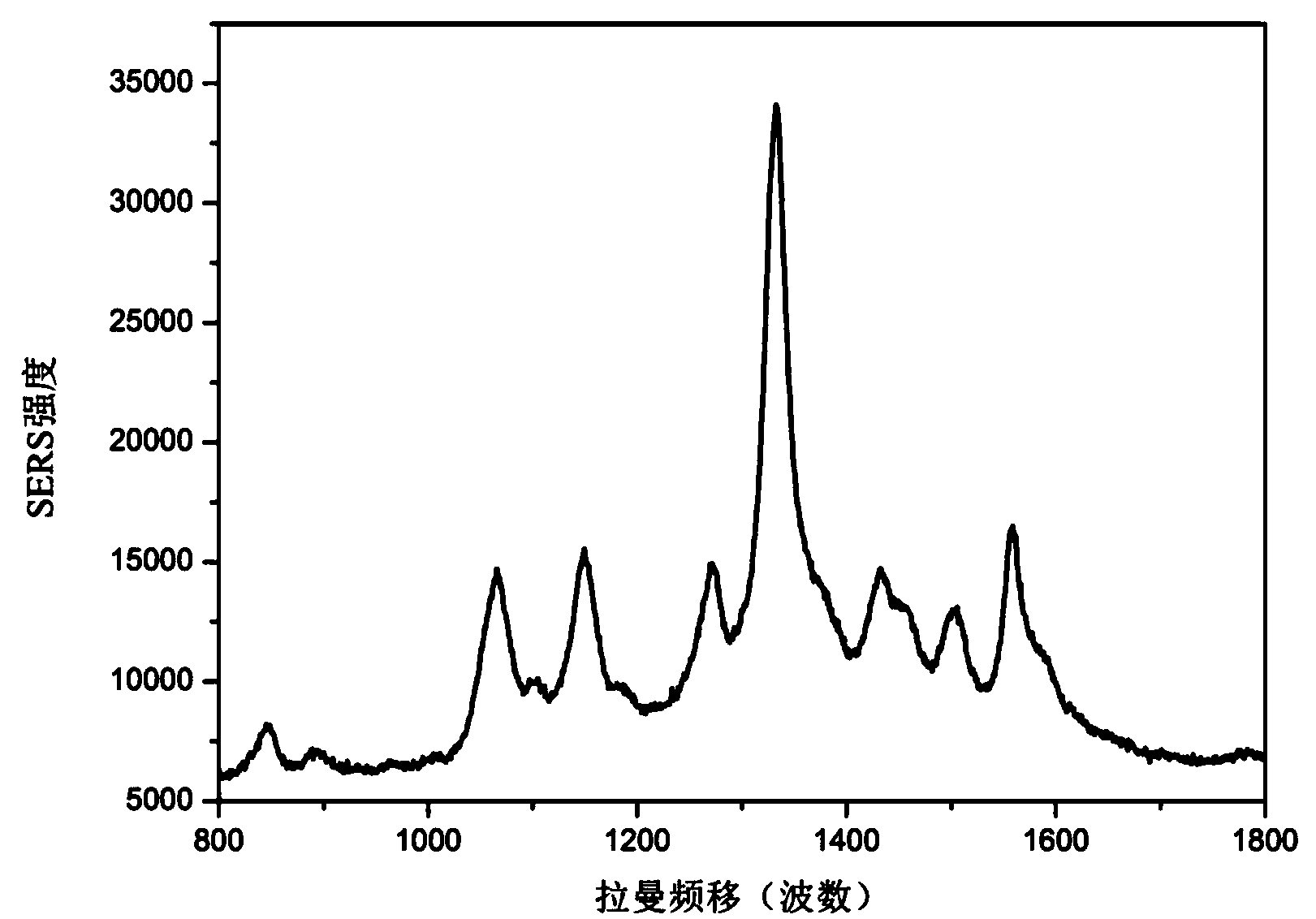Surface enhanced Raman scattering probe based on carbon nanotube and preparation method thereof
A technology of surface-enhanced Raman and carbon nanotubes, applied in the fields of nanomaterials and bioanalytical chemistry, can solve the problem of further improvement in sensitivity, stability and biocompatibility, low signal intensity of surface-enhanced Raman scattering, and biocompatibility Poor performance and other problems, to achieve the effect of low price, environmental friendliness and low cost
- Summary
- Abstract
- Description
- Claims
- Application Information
AI Technical Summary
Problems solved by technology
Method used
Image
Examples
Embodiment 1
[0044] Embodiment 1: Prepare the optical probe with the carbon nanotubes modified gold-silver composite nanoparticles as the SERS substrate, and the 5,5-dithiobis-2-nitrobenzoic acid molecule as the SERS marker. The method includes the following steps :
[0045] 1) Preparation of water-soluble carboxyl-functionalized carbon nanotubes.
[0046] Add 50 mg of purchased original multi-walled carbon nanotubes (diameter 40-60 nm, length 1-2 μm) to 100 mL of sulfuric acid with a concentration of 96% to 98% and nitric acid with a concentration of 65% to 68% (v / v=3: 1, 2:1 or 3:1) in the mixed solution, and then after ultrasonic cleaning for 8 hours, use a large amount of deionized water to filter and wash in the suction filter bottle until it is close to neutral, and the obtained carboxylated carbon nanotubes The length is about 500nm or so.
[0047] 2) Preparation of gold nanoparticles.
[0048] Get 1mL of 1% chloroauric acid solution and add it to 100mL of deionized water, heat t...
Embodiment 2
[0057] Example 2: The preparation method and steps are the same as those in Example 1, except that 5,5-dithiobis-2-nitrobenzoic acid molecules are replaced by 4-mercaptobenzoic acid molecules.
Embodiment 3
[0058] Example 3: Preparation of SERS optical probes with carbon nanotubes modified with silver nanoparticles as SERS substrates and 5,5-dithiobis-2-nitrobenzoic acid molecules as surface-enhanced Raman scattering markers, including Follow the steps below:
[0059] 1) Preparation of water-soluble carboxyl-functionalized carbon nanotubes. See example 1 step 1)
PUM
| Property | Measurement | Unit |
|---|---|---|
| diameter | aaaaa | aaaaa |
| length | aaaaa | aaaaa |
| size | aaaaa | aaaaa |
Abstract
Description
Claims
Application Information
 Login to View More
Login to View More - R&D
- Intellectual Property
- Life Sciences
- Materials
- Tech Scout
- Unparalleled Data Quality
- Higher Quality Content
- 60% Fewer Hallucinations
Browse by: Latest US Patents, China's latest patents, Technical Efficacy Thesaurus, Application Domain, Technology Topic, Popular Technical Reports.
© 2025 PatSnap. All rights reserved.Legal|Privacy policy|Modern Slavery Act Transparency Statement|Sitemap|About US| Contact US: help@patsnap.com



